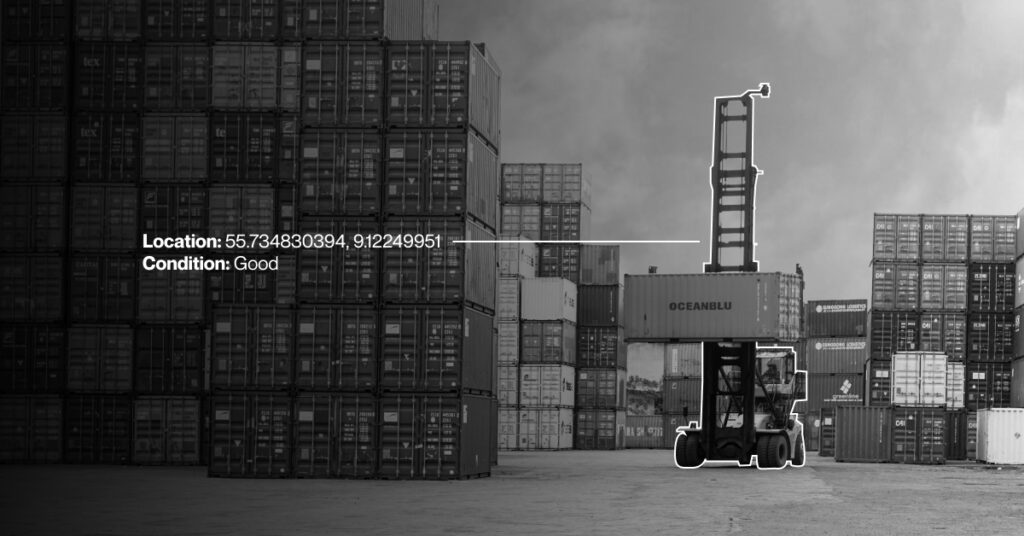Along with warehousing, these industries were the primary movers to embed connected ecosystems even before the term “Internet of Things” was coined.
The use of IoT devices makes it possible to greatly improve processes from warehouse storage to shipping from port to the manufacturer, all the way to the end customer.
Read on to learn more about the solutions that IoT offers to challenges in logistics and transportation.
Table of Contents
The 4 pillars of a connected ecosystem in logistics
The logistics industry has used connected ecosystems since before the emergence of the term “Internet of Things.” The reason for this is that connected ecosystems make it possible to track delivery vehicles and monitor the delivery process, helping to ensure timely shipment to remote locations.
The following four topics are elements that IoT has revamped, taking them from important elements to major pillars of a connected ecosystem:
- Communication system
- Location tracking
- Supply chain monitoring
- Cybersecurity
1. Communication system
The communication system facilitates continuous communication between truck drivers and managers. Cell phones are the most commonly utilized means of communication between these parties.
2. Location tracking
GPS tracking solutions are used to monitor the current location of vehicles conveying cargo to their destination, allowing logistics companies to estimate delivery times and monitor vehicles on their way to the port, warehouse, or final destination.
3. Supply chain monitoring
The logistics industry is supported by real-time supply chain monitoring systems. Such systems facilitate the streamlining of the entire supply chain process, from the acquisition of raw materials to the distribution of ready-to-use products.
4. Cybersecurity
IT security threats occur more and more frequently in the transportation industry. This also affects logistics companies, third-party vendors, and end clients, making cybersecurity an increasingly important safeguard against cyberattacks.
6 applications of IoT in the logistics industry
As mentioned above, the implementation of IoT has had a significant impact on the four pillars of a connected ecosystem, enabling the logistics industry to make notable advances. Below are six advantages of the application of IoT in the logistics industry.
1. Location and route management
For the vast majority of goods, trucks are the most flexible, responsive, and economic mode of transport. This means that for any logistics company, trucks are an essential asset.
In the US, trucks moved roughly 72.5% of the nation’s freight by weight in 2020, and in the European Union, trucks carried 73.1% of all freight transported over land in 2021.
Hence, IoT solutions for the logistics and transportation industries are highly popular due to their ability to facilitate location, route, and fleet management. Location and route management solutions enable logistics managers to:
- Monitor their trucks in real time,
- Use GPS tracking and geofencing techniques to monitor the route taken by their trucks, and
- Receive timely warnings of accidents, thunderstorms, or other anomalies that may affect shipment status.
By helping logistics companies track driver activities and ensure timely cargo delivery, these features can greatly improve the planning and management of delivery schedules.
2. Inventory and warehouse management
IoT in logistics and transportation also facilitates the storage of goods and the management of stock levels. Sensors and radio frequency identification (RFID) tags allow companies to keep track of the status and position of their inventory items.
Internet of Things technologies also facilitates the development of smart warehouse systems, which allow companies to:
- Prevent losses,
- Ensure safe storage of goods, and
- Efficiently locate items in the warehouse.
These benefits help companies to minimize manual handling errors, resulting in reduced labor costs and increased efficiency.
3. Condition-based maintenance (CBM) and breakdown prevention
Within asset management, IoT applications in logistics are particularly beneficial when it comes to identifying bottlenecks to prevent asset breakdown. Rather than remain dependent on scheduled inspection procedures, the logistics and transportation industries use IoT technologies for predictive maintenance and condition-based maintenance (CBM).
Through thorough performance analysis, IoT enables companies to predict patterns related to a vehicle breakdown. Real-time alert systems can also be used to notify companies of the probability of unexpected malfunctions preventable via CBM.
These IoT applications allow companies to:
- Create more effective inspection and repair strategies and improve decision-making processes,
- Identify defects before they become catastrophic, and
- Reduce risks and downtime for better process execution and timely delivery operations.
4. Blockchain technology and digital bill of lading (BOL)
When combined with blockchain technology, IoT applications can be used to create a digital bill of lading (BOL). This allows a company and its customers to trace products during delivery, creating transparency in the supply chain.
The digital BOL is one of many constituents within smart contract solutions facilitated by the combination of IoT and blockchain technologies. Along with sensors and GPS trackers, these solutions enable monitoring throughout the delivery process. This allows both company and customer to track the location of the product and measure the temperature, humidity, and other parameters during the delivery process to ensure that all contract conditions are met.
Combining IoT and blockchain technologies makes it possible to:
- Store all data surrounding the delivery in the blockchain, significantly reducing the probability of data theft or cyberattacks,
- Cancel a contract if it is breached, e.g. due to delayed delivery or spoiled cargo, and
- Further enforce the security, transparency, and traceability of the supply chain by maintaining two-way authority over the contract specifications.
5. Autonomous and self-driving vehicles
When it comes to IoT in logistics and transportation, ensuring the safety of drivers and cargo alike is just as important as tracking and managing assets. One way to do this is through autonomous and self-driving vehicles.
Connected infrastructures formed by IoT blends intelligent technologies such as machine learning and artificial intelligence, enabling companies to include autonomous and, ultimately, self-driving vehicles.
In logistics and transportation, this makes it possible to:
- Develop smart driving routes and directions,
- Reduce operation costs and minimize car accidents, and
- Analyze traffic conditions to ensure timely cargo delivery.
Read more: IoT: The Future of Technology in the Automotive Industry
6. Drone-based delivery systems
When it comes to package delivery – particularly within the fields of logistics, retail, e-commerce, and agriculture – drones, or unmanned aerial vehicles (UAVs), are the new medium. For example, the online retail giant and web service provider Amazon has announced that Amazon Prime Air is preparing to offer drone delivery in the U.S.
Alongside the application of drones, the implementation of IoT in logistics can ensure:
- Automated process execution,
- Cost-effective delivery, and
- Fast, hazard-free delivery of goods.
Global connectivity for logistics
Reliable and ubiquitous connectivity is especially vital for IoT in logistics.
When weighing up wireless connectivity options, such as Sigfox, LoRaWAN, Wi-Fi, Zigbee, Bluetooth, cellular, and satellite, most developers turn to cellular as it utilizes established global networks. This is because cellular IoT stretches to nearly every corner of the globe, offering high Quality of Service (QoS) based on long-established networks.
Other advantages of cellular connectivity for logistics and transportation use cases include:
- Long battery life,
- Relatively small form factors for devices,
- Low prices for data, and
- Low component costs.
Onomondo is the leader in global IoT coverage with high transparency on what is happening in the network and effortless control of networks and data. Whether using 2G, 3G, 4G, 5G, NB-IoT, or LTE-M, logistics and transportation solutions gain future-proofed coverage for their IoT devices when using an Onomondo IoT SIM.






